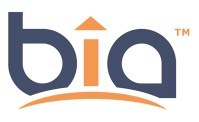
How to Make Meaningful Resolutions that Stick
To make your new year’s resolutions stick the latest thinking says that you must let go of past failures and strive for goals that really matter to you.
The new year is when many people set resolutions for themselves. After all, we don’t feel as perfect about our past as we would like. We strive to be better. A new year helps us to set the past aside and start fresh. There are many articles about setting resolutions; some are sceptical about how valuable this action is and some see value in it. Some see new year’s resolutions as a great opportunity to reflect on your goals, think about what you want to accomplish in the coming year, or in the coming months, or in the coming weeks. Others have found alternatives to setting resolutions and suggest that writing a “personal manifesto” is more effective because it addresses the what and why to spark personal change by beginning with an honest conversation with yourself.
In my opinion, the act of setting resolutions is valuable if it speaks to sparking our inner drive to change and improve ourselves. But to make this action worthwhile requires a desire and ability to let go of past failures and take the time for self reflection; to be honest about our character flaws and vulnerabilities and think about what is truly important to us. By doing this we can set meaningful personal goals and commit to changing behaviours for personal growth. It’s not easy to do.
Let Go of Past Failures
Wharton professor, Katherine Milkman says that moments when you wipe the slate clean can help you to meet your goals. Her research suggests that you may be able to create fresh starts, or frame fresh starts, to increase motivation.
“My research looks at failures of self-control as an obstacle to success, and seeks to develop strategies for overcoming this pattern–to determine how we can help people to do what they should more often.”
Milkman suggests, that we may want to bundle ‘should’ activities with things we have a strong desire to do. Her strategy of “temptation bundling” is to combine our guilty pleasures with simultaneously increasing the time spent doing things we should. For example, watching your favourite TV show only while exercising at the gym. She explains, “It can allow us to solve two problems at once, by reducing the amount of time we spend indulging in temptations while simultaneously increasing the time spent doing the things we should. In that way, it’s another strategy that can be used to help us achieve our goals.”
Set Worthwhile Goals
While letting go of past failures helps us to get over the ‘hump’ of inaction is an important part of moving forward psychologically, it may not be enough. Ultimately, inner drive and aspiration requires us to also find deep meaning in our efforts.
Well-known neurologist and psychiatrist, Viktor Frankl, believed that a person could find meaning by “striving and struggling for a worthwhile goal, a freely chosen task.”
Per Frankl, “To achieve personal meaning one must transcend subjective pleasures, by doing something for someone other than oneself, by giving oneself to a cause to serve or to a person to love.”
With this thought in mind, resolutions that you’re truly committed to would require a depth of introspection that exposes vulnerabilities and helps you address them. They would require that you articulate the principles that are most important to you and how you intend to act on them.
This idea correlates with one being suggested by Michael Hess, founder of sales management firm Core 6 Advisors. Hess suggests we write a personal manifesto. A manifesto is a rigorous written account of where you are, where you would like to be, and why.
In an article by Eric J. McNully, director of research at the National Preparedness Leadership Initiative he quotes Hess to say, “A manifesto doesn’t just pour out in 20 minutes. Being honest with yourself is a process. You sit, think, write, and edit. Put it aside. Come back to it and revise until the words are exactly what you want. A good manifesto requires in-depth introspection that exposes vulnerabilities and helps you address them.”
McNully explains, “This is something for you and by you. It is not intended to be shared with anyone.”
The act of writing a personal manifesto begins with an honest conversation with yourself and thinking about what you value most in your life. It focuses on how you are going to stay true to what’s important to you despite the curve balls that life may throw you. A manifesto can be amended as needed; it’s not a static document.
Begin by articulating the principles that are most important to you and how you intend to act on them. For example, “My mental and physical state of health is important to me so I will exercise three times weekly and eat nutritionally to maintain good health.”
Another important part of your personal manifesto is reflecting on the ideal life to which you aspire and what you want it to look like. One technique to help you articulate your wants is to create a “Vision Board.” A vision board is a poster board filled with photographs or visuals of your personal aspirations; pictures or words of what you want your life to be. You may select the photos from a variety of sources: magazines, newspapers, internet images and paste them down on a piece of poster board. You can arrange the board to reflect various aspects of your life; work, family, health, etc. Don’t overthink how you select the photos. Photos should evoke emotional, spiritual, and materialistic wants for yourself. I’ve found that a vision board is a surprisingly effective way of articulating your gut wants and taps into your desires through images that appeal to you.
Another technique for reflection and introspection that Michael Hess suggests is to collect quotations that resonate with you and ask yourself why you find them compelling. The motivational quotations will also help you to reflect on the ideal life to which you aspire and what your want your life to look like. Once you do this, it’s easier to identify the behaviours and actions to achieve it.
Summary
At the end of the day, setting resolutions for ourselves is a worthy cause and can help us achieve both personal growth and life goals. The definition of “high image resolution” means “more image detail.” In chemistry, “resolution” is the process of “reducing or separating something into components.” It is the smallest interval measurable by a scientific (especially optical) instrument; the resolving power. As a noun, a resolution is “the action of solving a problem, dispute or contentious matter.”
All these definitions provide us with further direction for setting our personal resolutions. Make sure to give them detail, choose them with an understanding and awareness of both our vulnerabilities and our aspirations for change and be prepared to act on them. And, of course, keep faith that you’re moving in the right direction with every thoughtful resolution you make.
“We should not judge people by their peak of excellence; but by the distance they have traveled from the point where they started.”
-Henry Ward Beecher



